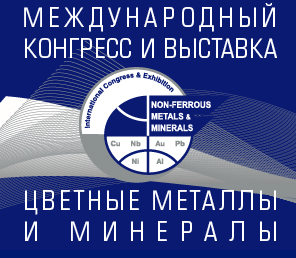SYNTESIS of DIMERIC SURFACTANTS based on SYNTHANOL DS-10 AND ADIPINIC ACID
Abstract
Mono- and di- esters of adipinic acid with long chain ethoxylated aliphatic alcohols (mixture of C10 – C12 and C16 – C18 alkohols) were obtained by the reaction of Synthanol DS-10 and adipinic acid and its dichloroanhydride. If adipinic acid with p-toluenesulfonic acid as catalyst were used as acylating agent and the mole ratio of Synthanol DS-10 to adipinic acid is 1:1 the yield of monoacylated product was 76 %. (temperature 120-125 °C, 3 h). If the mole ratio of Synthanol DS-10 to adipinic acid is 2:1 the yield of diacylated product was 80 % (temperature 120-125 °C, 6 h). Using dichloroanhydride of adipinic acid as acylating agent gives the 90 % (temperature 90-100 °C, 7.5 h) yield of diacylated product. The structure of all compounds was established by IR and NMR spectroscopy. Surface tension dependence on concentration in aqueous and alkaline medium was investigated for the obtained compounds. It was determined that the colloidal properties of the synthesized products differ significantly from the original Synthanol DS-10. The minimal surface tension of synthesized compounds is 25-33 mN/m. The surface activity of monoester in 5 % sodium hydroxide is 5.74 N·m2·mol-1 (for Synthanol DS-10 3.06 N·m2·mol-1). But in water their surface activity is 4.00 and 4.17, respectively. Opacity temperature in different mediums was established for the new compounds. Cloud point at the concentration of 0.25 g/dm3 of diester of adipinic acid in water (>100 °C) is significantly higher than for Synthanol DS-10 (81 °C) and for monoester (46 °C). In 5 % solution of sodium hydroxide the cloud points of all these compounds are the same (difference is 2-3 °C). The new products are stable in water and alkaline medium, but not stable in 0.1N solution of hydrochloric acid. The new synthesized surfactants from Synthanol DS-10 and adipinic acid (by the complex of colloidal and physical-chemical properties) are interesting as the ingredients of technical and household compositions.
Forcitation:
Lominoga E.A., Burmistrov K.S., Gevod V.S. Syntesis of dimeric surfactants based on synthanol DS-10 and adipinic acid. Izv. Vyssh. Uchebn. Zaved. Khim. Khim. Tekhnol. 2018. V. 61. N2. P. 91-96
References
Holmberg K, Iensson B, Kronberg B. Surfactants and polymers in aqueous solutions. M.: BINOM. 2012. 532 p. (in Russian).
Lominoga E.A., Burmistrov K.S., Gevod V.S. Synthesis and properties of acylation product. Vopr. Khimii i Khim. Tekhnologii. 2014. V. 3. P. 52-55 (in Russian).
Velikonskaya N.M., Velichko V.V., Lominoga E.A. Analitihcal application of salicyl fluorone for determination of scandium (III) in the presence of surfactants of different ionic nature. Vopr. Khimii i Khim. Tekhnologii. 2016. V. 2. P. 10-13 (in Russian).
Pletnev M.Yu. Cosmetics and hygiene detergents. M.: Khimiya. 1990. 272 p. (in Russian).
Pletnev M.Yu. Surfactants and compositions. M.: «Firm Clavel». 2002. 768 p. (in Russian).
GOST 10730-82 Materials textile auxiliaries drug OC-20. (in Russian).
Grigoriev A.P., Fedotov O.J. Laboratory workshop on polycondensation plastics technology. M.: Vyssh. Shk. 1971. 231 p. (in Russian).















